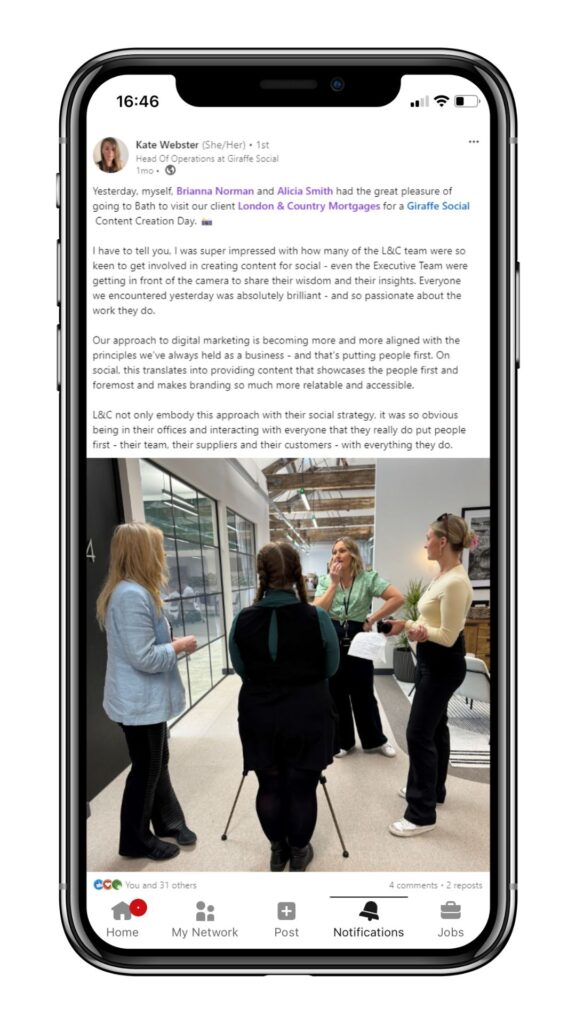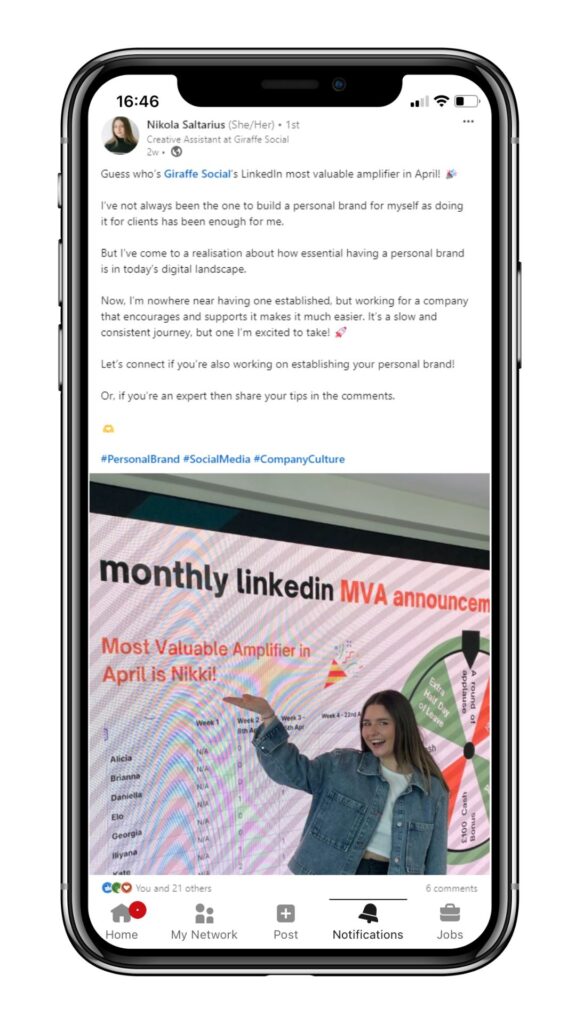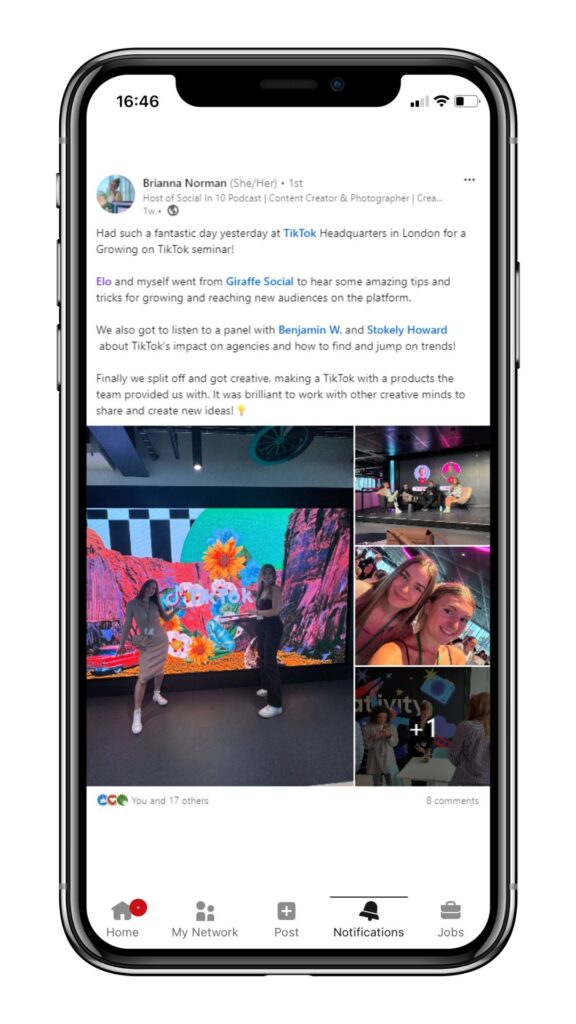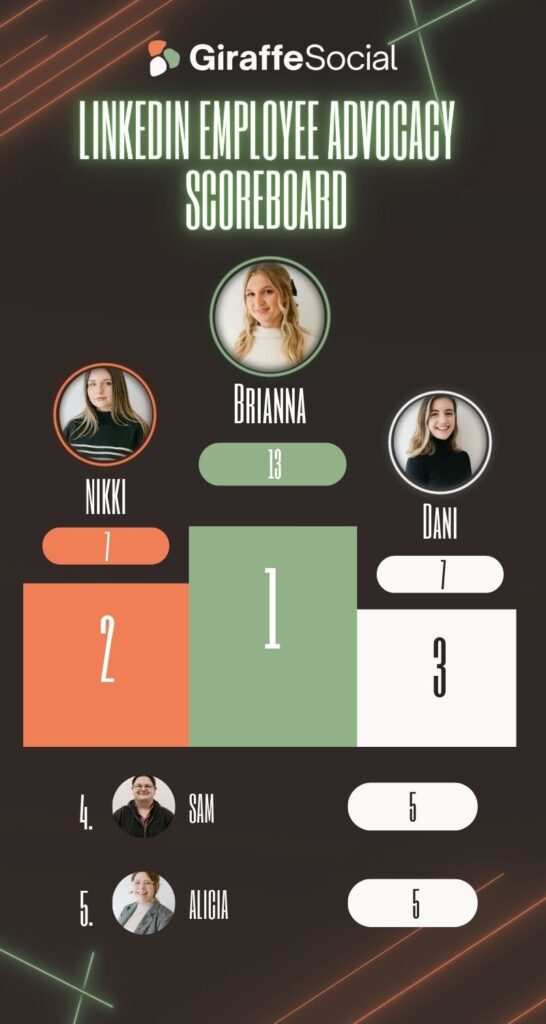Imagine this: your team, proudly wearing their metaphorical capes, sharing their genuine enthusiasm for your brand across LinkedIn. The result? A significant boost in your brand’s visibility, credibility, and engagement. Welcome to the world where your employees are your greatest marketing superheroes!
But how do you turn your employees into LinkedIn influencers? Well lucky for you, we’re here with a guide on how you can build an effective LinkedIn employee advocacy program that will elevate your company page to new heights.
The power of LinkedIn Employee Advocacy
Empower your employees to promote your brand’s mission, product, or services through their personal LinkedIn profiles with LinkedIn Employee Advocacy programs. Harness the power of your employee’s credibility and reach to enhance your brand’s visibility and trustworthiness amongst potential consumers and employees. Did you know that engagement on content shared by employees is eight times higher than the content shared on a brand’s channels? So, it’s worth allocating your employee’s weekly time to curate their LinkedIn content, just for that ROE. Not only does employee content allow for more engagement directed towards the brand, but employees who are active so social media at 20% more likely to stay with their brand and on average feel 27% more optimistic about the future of the brand…and we all know a brand is nothing without its employees.
Why LinkedIn?
LinkedIn plays host to 740 million users globally and is the leading platform for professional networking and career development. The platform offers a playground for brands to connect with industry professionals, and potential clients and scope out top talent. Due to LinkedIn’s focus on professional connections, employees can seamlessly integrate their professional activities with brand advocacy efforts, making it the perfect platform for employee advocacy programs. Not only will employees enhance their personal brand, but they will also simultaneously enhance the brand’s perception.
Steps to build an effective LinkedIn Employee Advocacy Program
1. Establish clear objectives
Are you looking to increase brand awareness, generate leads, or enhance recruitment efforts? Before you can kick off your brand’s employee advocacy program, it’s crucial to define what you’re aiming to achieve. Once the goal has been defined it will be easier to guide the structure and measure the success of your program. For example, if your goal was to increase brand awareness, you would likely focus on qualitative metrics such as reach, likes, comments and shares.
2. Secure executive buy-in
What’s the point in asking your employees to advocate for your brand when the C-suite won’t? Getting the support of leadership is vital for the success of your program. When the C-suite actively participate and endorse the program, it sends a powerful message throughout your brand. Not sure how to get your C-suite on board? Read our post on leadership in the limelight: the power of C-suite personal branding. By getting your C-suite involved you can also begin to really align the advocacy program with the brand’s larger strategic goals.
3. Identify and train employees
Depending on the size of your brand and your team, not every member will be an ideal advocate. Start with identifying the team members who are already active on LinkedIn and show enthusiasm for your brand’s mission. Within their own professional network, these individuals are often natural influencers and can help spread your brand’s mission further. However, it is always worth offering training to all employees on best practices for LinkedIn engagement. This can include how to craft compelling posts, identifying and using relevant keywords, and how to successfully interact with their network. In addition, training should also cover compliance with company policies and any guidelines your brand wishes to put in place to ensure consistent and professional representation.
4. Offer opportunities for content
You can’t expect employees to create content if they aren’t given the opportunity to. As a brand, you need to provide them with a steady stream of high-quality, shareable content. This could include company news, sending them to networking events, or holding team days. Also getting employees to reshare brand posts with their own personal touch can help to enhance authenticity and increase the impact of shared content.
Types of content for LinkedIn Employee Advocacy
- Company news: This could be updates about new products/ services, company achievements or even just sharing the latest podcast episode.
- Industry insights: Staying up to date with trends and changes within their industry is one of the many reasons users navigate to LinkedIn so encouraging employees to share industry insights is a great way to show your team has their finger on the trigger.
- Thought leadership: Encourage your employees to shake off that feeling of imposter syndrome and get them to share their thoughts on subject matters that position your brand as an industry authority.
- Professional progression: Nowadays a job is a two-way transaction, potential employees want to know what your brand has to offer them professionally. Having employees showcase attend an industry-leading seminar, or complete a course on LinkedIn learning are both ways to highlight how your brand supports its employee’s professional progression and development.
Top performing posts from Giraffe employees



5. Utilise advocacy tracking tools
Skip tracking your advocacy program in an Excel file, there are several tools available to help you streamline the management. These include LinkedIn Elevate, Hootsuite Amplify, and Smarp. These tools allow you to share content, track engagement and easily measure the impact of your advocacy program. These tools (along with adequate resources) can make participation less daunting and more efficient for your employees. In addition, these tools allow you to regularly monitor the performance of your program against the clear objectives set earlier. Look at metrics like engagement rates, content reshares, and the growth of your company page followers. These insights will allow you to make the necessary adjustments to continuously improve your program.
6. Recognise and reward participation
Creating a culture of appreciation will motivate your employees to stay active within the program. This appreciation could range from public recognition in company meetings to more tangible rewards such as gift cards, bonuses or having the boss buy the winner’s lunch. If you really want to engage your employees utilise gamification elements, such as leaderboards or badges to really make your program engaging and fun.
7. Check in with your employees regularly
Sit down and talk to your employees regularly to get their input on how the program is running. Use it to identify areas for improvement and to ensure the program runs in a way that meets their needs and expectations while also benefiting the company. Remember LinkedIn advocacy programs are not just about amplifying your brand’s voice, it is also about empowering your employees.

Case studies
Adobe
Adobe’s employee advocacy program walked so your program can run. Their program encourages their employees to participate in company culture in a multitude of ways with one of the key ways being to publish on LinkedIn. When it comes to hiring for a hard-to-fill position, Adobe asks their hiring managers and teams to publish content showcasing the projects they’re currently working on in a way that is enticing and intriguing but can still be shared publicly. This not only increases the awareness of the vacancy but also creates interest in potential candidates who might want to get involved with that project.
Bolt
To significantly boost their brand’s presence, the fast-growing transportation platform Bolt has implemented a robust LinkedIn employee advocacy program. Their approach focuses on a combination of targeted content, and employee training, and has developed incentive structures to encourage and reward participation. Their employees are encouraged to share their own personal stories and experiences for working at Bolt in order to humanise the brand and attract top talent. As a result, Bolt has seen an increase in engagement on their LinkedIn company page, higher recruitment success, and stronger brand loyalty among their team. In addition to this, Bolt has created a cohesive and dynamic company culture, leaving employees feeling more connected and valued.
Conclusion
By strategically building and nurturing a LinkedIn employee advocacy program, you can not only significantly grow your company page, but also create meaningful impact within your industry. Remember the key to growing on social media lies within the authentic connections we foster. It’s time to empower your employees, share your story, and watch your brand thrive.
Want to really harness the power of your employees? Contact us today and discover how we help ambitious brands like yours make a significant impact.






